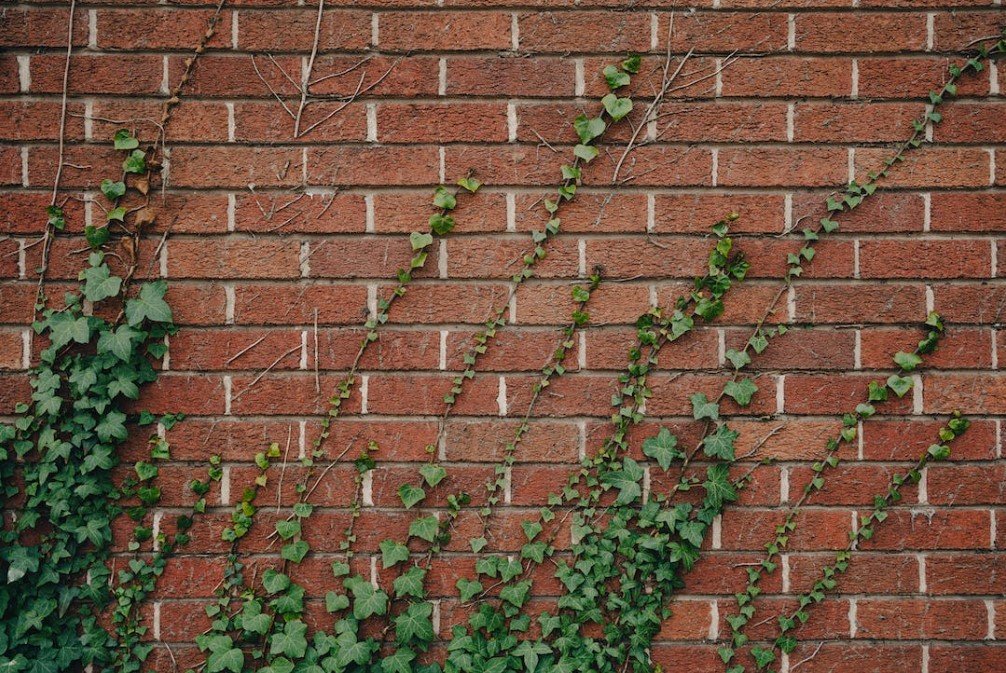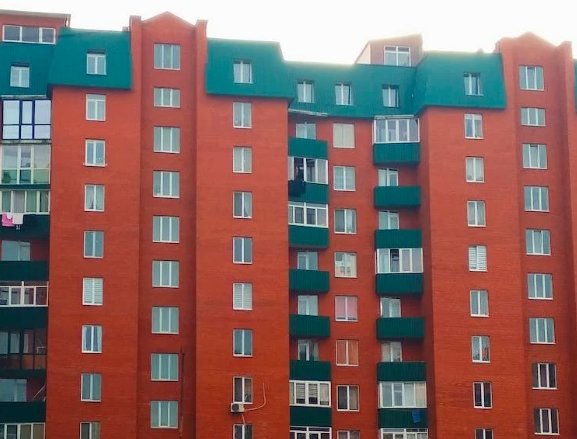Brick walls are a timeless and classic choice for building structures. They convey strength, and durability, and are designed to last for generations. However, even the sturdiest brick walls can deteriorate over time due to weather exposure, pollution, and other external factors. This is where brick tuckpointing comes into the picture.
Brick tuckpointing is a technique used to repair and restore the appearance of brick walls. It involves removing damaged mortar from between the bricks and replacing it with new mortar, resulting in a flawless and uniform finish. This technique not only enhances the aesthetic appeal of the structure but also helps to maintain its structural integrity.

It is important to maintain the structural integrity of brick walls as they support the entire structure. Crumbling and deteriorating brickwork can weaken the building’s foundation, leading to potential structural damage and safety hazards. Brick tuckpointing can significantly increase the lifespan of brick walls, enhance their durability, and also increase the value of your property.
The Problem of Crumbling Walls:
Crumbling walls are a common issue for many buildings, especially those constructed with brick or other masonry materials. This can be caused by a variety of reasons, including damage from water, age, or poor construction practices.
Causes of crumbling walls:
One of the main causes of crumbling walls is the exposure of the bricks or other masonry materials to excess moisture over time. This can be due to a leaky roof or gutter, rising dampness caused by flooding or groundwater, or even poor ventilation. Another common cause is the use of low-quality or inappropriate materials during the initial construction of the building. This can include bricks that are not strong enough to withstand the elements or mortar that is not properly mixed or installed.
Negative effects on the building’s structure and aesthetics:
Crumbling walls can have a significant impact on both the structure and aesthetics of a building. Firstly, it can weaken the overall structure of the building, which can be extremely dangerous in extreme weather conditions like storms or earthquakes. Secondly, the appearance of crumbling walls can detract from the overall beauty and charm of a building, reducing its property value and making it less desirable to potential buyers or tenants.
Importance of addressing the problem:
Addressing the problem of crumbling walls is important for several reasons. Firstly, it can help to maintain the structural integrity of the building, ensuring that it is safe and secure for all occupants. Secondly, it can help to improve the overall appearance and aesthetic of the building, boosting its value and enhancing its curb appeal. Finally, addressing the problem can prevent future damage and potentially costly repairs down the line, saving the building owner both time and money.
The Solution: Brick Tuckpointing
Definition and process of brick tuckpointing:
Brick tuckpointing is the process of repairing mortar joints in brickwork. It involves removing the damaged or eroded mortar joints between the bricks and replacing them with new mortar. The process usually involves three steps: preparation, removal, and replacement. In preparation, the surface of the bricks and the joints are cleaned to remove any loose debris and dust. Then, a thin layer of the old mortar is removed using specialized tools such as a chisel or grinder. Finally, a new mortar mix is prepared and applied to the joints using a pointing trowel.
How mortar repair can increase the lifespan of brickwork:
Mortar is an essential component of brickwork as it holds the bricks together and provides strength and stability to the structure. Over time, exposure to the elements or other factors can cause the mortar to crack, crumble, or disintegrate. This can lead to water infiltration, which can weaken the brickwork and cause further damage. Repairing the mortar joints through tuckpointing can help prevent further damage and extend the lifespan of the brickwork.
Benefits of professional tuckpointing:
Professional tuckpointing services offer several benefits that make it a worthwhile investment. Firstly, professional tuckpointing can ensure that the repair work is done correctly and effectively. This is because professionals have the expertise, experience, and tools necessary to complete the job accurately and efficiently. Secondly, professional tuckpointing services can provide a more uniform and aesthetically pleasing finished product, improving the overall appearance of the brickwork. Finally, by hiring a professional to perform tuckpointing, homeowners can avoid potential safety hazards associated with performing DIY repairs on tall or unstable structures.
When to Consider Brick Tuckpointing
Brick tuckpointing is a popular solution for homeowners with deteriorating brickwork. It is a cost-effective and efficient method of repairing brickwork without having to replace the entire structure. However, it is important to know when to consider brick tuckpointing to avoid further damage to the structure in the future.
1. Signs of deteriorating brick joints
The first sign to consider is the deterioration of brick joints in your home. This can be observed through the following signs:
– Cracking: This is a common sign of deteriorating brickwork. If you notice that your brickwork is cracked, it is an indication that it might be time to consider brick tuckpointing.
– Fading: Fading can also be considered a sign of deteriorating brickwork. Over time, the color of your bricks can fade, and this is a direct result of environmental factors such as sunlight, moisture, and extreme temperatures.
– Efflorescence: This occurs when salts in the brickwork come to the surface. It is often caused by excessive moisture, and it can be an indication that the brickwork is deteriorating.
2. Factors to consider before deciding to replace or repair brickwork
Before deciding to repair or replace your brickwork, there are several factors to consider. It is essential to evaluate the extent of the damage before making a final decision. Some of the factors to consider include:
– The age and quality of the brickwork: If your brickwork is relatively new and of good quality, and the damage is minimal, you may want to consider repointing rather than replacing it.
– The extent of the damage: If the damage is extensive, it may be more cost-effective to replace the brickwork entirely. However, if the damage is minimal, and your brickwork is still structurally sound, you may want to consider repointing.
– The location of the damage: If the damage is located in an area that is difficult to access or repair, it may be more challenging to replace the brickwork.
The Process of Brick Tuckpointing
Brick tuckpointing is a restoration process that involves repairing and restoring the brickwork of a building by removing the damaged mortar and replacing it with new mortar. The following are the steps involved in the tuckpointing restoration process:
1. Preparation:
Before starting the tuckpointing process, the masonry contractor will first inspect the affected area to assess the extent of the damage. They will then prepare the site by covering the surrounding surfaces to protect them from the debris.
2. Removing the old mortar:
Once the site is prepared, the contractor will use a grinder or chisel to remove the old and crumbling mortar from between the bricks.
3. Cleaning the joints:
After removing the old mortar, the contractor will clean the joints between the bricks to remove any loose debris and create a sound base for the new mortar.
4. Applying new mortar:
The masonry contractor will then apply new mortar in the joints using a trowel and make sure that it is evenly spread and leveled. The type of mortar used will depend on the type of brick and the location of the building.
5. Smoothing and finishing:
Once the new mortar is applied, the contractor will smooth and finish it to match the surrounding brickwork. They will then brush the surface to remove any excess mortar and ensure that the joints are uniform.
It is essential to hire professional masonry contractors for brick tuckpointing because they have the expertise to diagnose the problem correctly and provide the most effective solution. They will use the right tools and techniques to make sure that the restoration process is done correctly, and that the building’s structural integrity is not compromised.
Professional masons know how to match the mortar color and texture with the existing brickwork to create a seamless finish. They also use quality materials that are suitable for the specific type of bricks used in the building, ensuring that the restoration work will last for years to come.
It is critical to avoid an amateur or DIY approach when it comes to brick tuckpointing, as improper techniques can result in significant damage to the building. Therefore, it is highly recommended to hire trusted and experienced masonry contractors to ensure the success of the tuckpointing restoration process.
Benefits of Brick Restoration:
Brick restoration, specifically brick tuckpointing, can provide numerous benefits for property owners who are experiencing issues with their brickwork. Brick tuckpointing is a process of removing deteriorating mortar from between the layers of brick and then replacing it with new, fresh mortar. Here are a few benefits property owners can expect from brick restoration:
1. Improves the Look and Value of the Property:
Brick tuckpointing can significantly improve the aesthetic appearance of the property. When the mortar between bricks deteriorates, it can make the entire wall appear old and worn out. By restoring the mortar and adding new layers, the brickwork can look fresh and new again, enhancing the curb appeal of the property and thus increasing its resale value.
2. Strengthens The Building:
One of the most significant benefits of brick tuckpointing is that it strengthens the building. When mortar between bricks begins to deteriorate, it allows moisture to penetrate the brickwork and cause damage. Over time, the structural integrity of the building can become compromised. By repairing the mortar, the building’s structure is restored, preventing further damage from occurring.
3. Protects Against Leaks and Water Damage:
If the mortar is left to decay for too long, water can penetrate through the brickwork and cause significant damage. This water damage can lead to the growth of mold, mildew, and even structural damage. By repairing the mortar, brick tuckpointing protects the building against leaks and water damage, which can save property owners thousands of dollars in repair costs.
Tips to Preserve and Enhance Brickwork:
1. Simple maintenance steps to enhance the durability of brick walls:
Proper maintenance can significantly enhance the lifespan and durability of your brick walls. Simple steps such as regular cleaning and ensuring proper drainage can prevent damage and slow down deterioration. Clearing gutters and downspouts, removing vegetation, and filling cracks and crevices with mortar can also aid in improving the overall structure of your brick walls.
2. Importance of regular inspection and upkeep:
Regular inspections of your brick walls will help identify potential problems early on, allowing for timely repairs and necessary maintenance. Inspections can also help prevent further deterioration and the need for costly repairs. It is advisable to inspect your brick walls at least once a year, or more frequently if you notice any signs of damage.
Risks of Neglecting Brick Maintenance:
1. Consequences of ignoring brickwork issues:
Neglecting brick maintenance can lead to a host of issues such as structural damage, mold growth, and pest infestations. Crumbling brickwork can cause a range of problems, from water damage to weakened walls and even collapsed structures. Failing to address these issues in a timely manner can have a compounding effect, leading to further damage and costly repairs.
2. Financial and safety risks of neglecting brick maintenance:
Not only can neglecting brick maintenance lead to expensive repairs, but it can also pose significant safety risks. Weak and crumbling brick walls can pose a hazard to both occupants and passersby, leading to potential lawsuits and liability issues. Additionally, structural problems can diminish the value of your property, making it difficult to sell or lease.
Conclusion
In conclusion, brick tuckpointing is an essential solution to repair and restore the crumbling walls of a property. It not only improves the aesthetic appeal but also protects the building from further damage and extends its lifespan. However, it is crucial to hire qualified and professional tuckpointing contractors to achieve the best results. They have the expertise and knowledge to assess the damage, select the appropriate materials and techniques, and execute the work with precision.
Therefore, property owners should invest in brick maintenance and restoration regularly to avoid costly repairs and replacements in the future. It is a wise decision to protect their investment, preserve the historical significance of their property, and create a safe and comfortable living environment. By taking care of their property’s brickwork, homeowners can enjoy the benefits of a beautiful and durable property for years to come.
FAQs – Brick Tuckpointing
1. What is brick tuckpointing?
Answer: Brick tuckpointing is a process of filling in the mortar joints between bricks to provide a restored and refreshed appearance, as well as to prevent further damage.
2. Why does brick tuckpointing help with crumbling walls?
Answer: By filling in the gaps or cracks in the mortar with fresh, structurally sound materials, the wall is restored to its original integrity and strength.
3. How do I know if my walls need tuckpointing?
Answer: Signs of crumbling mortar include cracks, gaps, or holes in the mortar joints, and disintegration or chalky texture of the mortar.
4. Can I do brick tuckpointing myself?
Answer: While it is technically possible, it is recommended that you hire a professional tuckpointing service to ensure that the work is done correctly and with durable materials.
5. How much does brick tuckpointing cost?
Answer: The cost varies depending on the size of the wall and the extent of damage. On average, it can range from $7 to $12 per square foot.
6. How long does brick tuckpointing take?
Answer: The duration of the work depends on the amount and type of damage, but in general, it can take anywhere from a few days to a week or more.
7. What kind of mortar is used for tuckpointing?
Answer: A cement-based mortar that has a composition and color similar to the original mortar is typically used for tuckpointing.
8. Can tuckpointing be done on all types of brick walls?
Answer: Yes, brick tuckpointing works on all types of brick walls, including historical or heritage buildings.
9. Will my walls look different after tuckpointing?
Answer: If done correctly, tuckpointing will blend in seamlessly with the original mortar, and the walls will look as good as new.
10. How often should I have my walls tuckpointed?
Answer: It is recommended that brick tuckpointing be done every 25-30 years to maintain the integrity and longevity of the wall. However, this can vary depending on exposure to weather and other factors.














